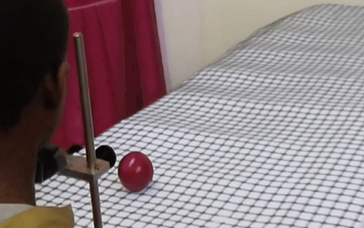Recent findings
click here for the full list of publications
Following surgery, the patients’ visual acuity typically allowing discrimination of pupil position in the eye.
Yet, the patients failed to show eye gaze-following effects and fixated less than controls on the eyes—two spontaneous behaviors typically seen in controls.
We focus on vision-based understanding of human social interactions. The late-sighted were poorer than typically developing peers in categorizing observed social scenes as friendly or aggressive, irrespective of the display format (i.e., full-body videos, still images, or point-light displays).
This deficiency was maintained when retested later.
Within months after sight restoration surgery, patients could identify age, gender, emotional expressions though performance varied and was strongly linked to their postoperative visual acuity.
Comparisons with sighted controls under simulated blur suggested that, while a certain level of acuity is needed to learn these skills, once acquired they can be used even when facial details are heavily degraded.
The findings indicate a critical acuity threshold but no strict critical period for developing face-based social perception.
Viewing a hand action performed by another person facilitates a response-compatible action and slows a response-incompatible one. There is an ongoing debate about whether this effect is innate or experience-dependent.
The newly sighted children were less affected by viewing task-irrelevant actions than control children, even two years after the surgery.
Our results indicate that if imitation is based on innate mechanisms, these mechanisms are clearly susceptible to long periods of visual deprivation.
They also strongly suggest that visually guided motor experience is necessary for the development of automatic imitation.
Typically developing children can recognize objects in slit-viewing conditions by integrating contours over time. Could this ability emerge after prolonged childhood blindness? Six months post-surgery, many of the newly sighted could not recover shape under slit-viewing conditions, though they could detect global motion. When retested later, most succeeded, indicating that temporal integration skills can develop after sight restoration. These findings suggest that sophisticated visual inference remains plastic into adolescence, making substantial recovery after early-onset blindness possible.
We tested the visual perception of newly sighted individuals in various shape recognition tasks. Our findings suggest that inference-based vision is highly susceptible to long-term visual deprivation: while shape recognition based on low-level cues is gained within months after cataract removal, shape recognition from mid-level cues (such as shading or occlusion) remains deficient.

Children typically underestimate the size of a distant object.
This underestimation decreases over time, suggesting that visual experience may be essential for attaining true size constancy.
But what if you had very limited vision during the early years of life?
We tested the size estimation abilities of the newly sighted and found that they could still judge object size reasonably well, often even overestimating the size of far objects. We therefore suggest that limited visual experience may be sufficient for the development of size constancy.








